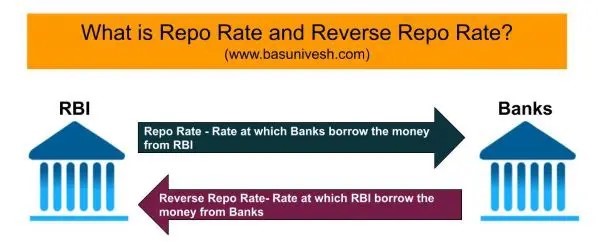RBI Expected to Cut Repo Rate Amid Growth
Why in the news?
The Reserve Bank of India is likely to reduce the repo rate by 25 bps in its upcoming meeting, responding to economic growth measures in the Union Budget and easing inflation, marking its first rate cut in five years.
Impending Rate Cut:
- The Reserve Bank of India (RBI) is expected to reduce the repo rate by 25 basis points (bps), from 6.5% to 6.25%, in its upcoming policy meeting from February 5-7, 2025.
- This would be the first rate cut in nearly five years and the first under the newly appointed RBI Governor, Sanjay Malhotra, who took office in December 2024.
Economic Rationale
- Madan Sabnavis, Chief Economist at Bank of Baroda, believes a rate cut is timely due to the Union Budget‘s focus on boosting growth and expectations of a decline in inflation.
- The Union Budget 2025-26 cut personal income tax and revised TDS limits, aiming to stimulate consumption demand.
- Retail inflation eased to 5.22% in December 2024, down from 5.48% in November, further supporting the case for a repo rate cut.
Potential Impact and Global Context
- The anticipated repo rate cut will lower External Benchmark Lending Rates (EBLR) and may lead to reduced EMIs for borrowers.
- It follows liquidity measures announced by the RBI, including forex swaps and open market operations, to ensure market stability.
- The RBI’s decision comes amid global trade uncertainties, with the US tariffs triggering concerns about trade wars and the rupee’s depreciation.
What is Repo Rate?
- Definition: The repo rate is the interest rate at which a central bank (e.g., RBI) lends money to commercial banks for short-term needs.
- Purpose: It is used as a tool for monetary policy.
- Inflation Control: Helps control inflation by influencing borrowing costs.
- Liquidity Management: Regulates liquidity in the economy.
- Economic Impact: Affects interest rates, credit availability, and overall economic activity.
- Adjustment: Changes in the repo rate can influence consumer and business loans.




